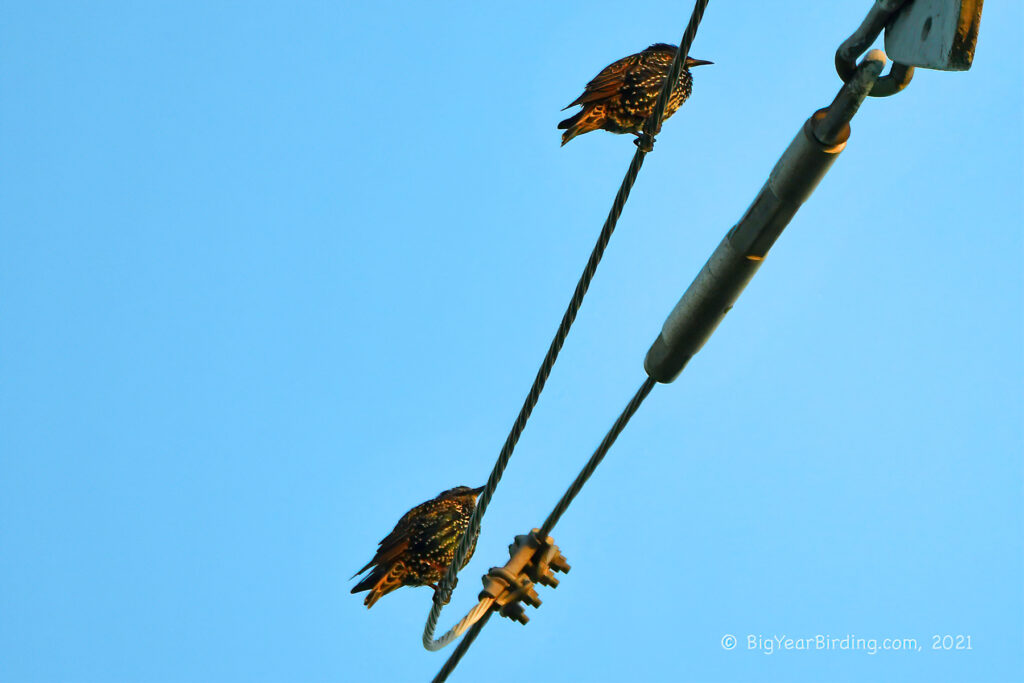
The European Starling (Sturnus vulgaris) is a medium-sized passerine bird that is native to Europe, but has been introduced to many other parts of the world, including North America, Australia, and New Zealand. It measures approximately 8.5 inches in length and has a wingspan of about 14 inches. Adult starlings weigh between 2.5 and 3.5 ounces, making them relatively heavy for their size.

The European Starling has a distinctive appearance with glossy black plumage and iridescent purple and green sheen. During breeding season, the male starling develops a bright yellow bill, which sets him apart from the female. Young starlings have brown plumage and lack the adult’s iridescence. Juvenile starlings have a brown head and a speckled brown breast.
European Starlings are partially migratory, with some populations migrating south during the winter months. In North America, starlings found in the northern regions of the continent are migratory, while those in the southern regions are resident year-round. Migratory populations of European Starlings in North America can travel as far as 2,500 miles between their breeding and wintering grounds.
The European Starling is an adaptable species that can thrive in a variety of habitats, from urban areas to rural farmland. They are omnivorous and eat a variety of insects, fruits, and seeds. In urban areas, starlings are often seen foraging on the ground or perched on rooftops and telephone wires. In the countryside, they can be found in fields and pastures, feeding on insects and agricultural crops.

European Starlings are known for their vocalizations, which include a wide range of calls and songs. They are also known for their murmurations, where thousands of birds flock together and fly in synchronized patterns. These displays are a spectacular sight and can be seen in the autumn and winter months as the birds prepare to roost for the night. Despite being considered pests in some areas due to their high populations, the European Starling is a fascinating and adaptable species that continues to capture the attention of birdwatchers and nature enthusiasts alike.

